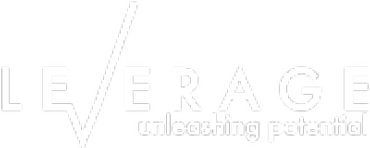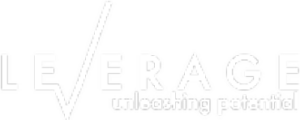Leverage in practice
“Give me a lever long enough and a place to stand, and I can move the Earth.” – Archimedes
To lift a heavy object, you have a choice: use a lever or not. You can try to lift the object directly under your own power and risk injury, or you can choose to use leverage, such as a jack or a long plank, to shift the weight and lift the object that way.
Which approach feels wisest? Will you succeed without using a lever? Perhaps. But you can lift so much more with a lever and so much more easily!
So what does this have to do with your life and career? The answer is “a lot”. By applying the concept of leverage in business or career, you can achieve success and accomplish so much more than you could without. Without leverage, you can work very, very hard, but your rewards are limited by the hours you put in. With leverage, you can break that connection and over time achieve a lot more.
Levers for success
So how can you apply leverage to your career? How can you achieve much more even though you choose to work fewer hours if you want to?
To do this, you must learn to use the levers within:
• Time (yours and others’)
• Assets
• Knowledge and education
• Technology
The lever “time”
The most fundamental lever for success. There is a limited number of hours per day that you can work. Being limited to your own time, you can only do so much. By finding leverage through other people’s time, you can dramatically increase productivity.
Your OWN time
– Practice effective “time management”. Remove unnecessary activities and focus your efforts on the things that are really important and crucial.
– As part of this, you must learn to prioritize so that you focus your energy on the things that give the most return on invested time. Think ROI based on your own time.
– Actively use goal setting to think about what is important to you in the long term, set clear goals and motivate yourself to achieve these goals.
Other people’s time
– Learn to delegate work to others (this is a very important trait and takes practice and work to do effectively and to avoid micromanagement)
– Train and empower others, e.g. through team building.
– Bring in experts and consultants to cover knowledge and skills gaps. Don’t try to do everything yourself.
– Outsource non-core activities to people who have the experience to perform them more efficiently.
Provided you do this right, both the time and money you spend leveraging other people’s time is money well spent. If you don’t take the time to e.g. train or brief someone to do work for you, you lock yourself into doing things you’ve always done and limit yourself to achieving only what you can and have time to do yourself.
Leverage through assets
You can also develop leverage by making the most of your own assets and making the most of your personal strengths.
You have a wide supply of skills, talents, experiences, thoughts and ideas. These can and should be used in their very best combination. What relevant skills and strengths do you have that others don’t? How can you use these in the very best way and how can you develop them so that they become exceptional? What relevant assets do you have that others don’t? How can you use these to achieve leverage? Do you have contacts that others don’t? Or financial assets? Or some other asset you can use in a better way?
A good way to find these is to do a personal SWOT, which consists of identifying strengths and assets and starting from these to find the opportunities they can give you. An advantage of this is that you can also find any weaknesses that need to be covered.
Leverage through education
Another important lever for success is applied knowledge. Combined with education and action, this can create enormous leverage.
Learning through experience is slow and painful. If you can find more formal ways to learn, you will make progress much faster. Also, if you choose a good course, you will have a solid base of knowledge and not one that has risky gaps. This is why people who work in the field of “life and death” (doctors, pilots, architects, etc.) have a long and thorough education. Think about it – would you want to be operated on by an unqualified surgeon who takes a few chances?
Most of us don’t work in such directly critical areas, but by understanding what you really need to learn, up to what level, and then assimilating that knowledge, you can avoid many years of slow, painful trial and error- learning.
The same applies in organizations – it is ineffective to learn how things should be done by “trial and error”. A much better way of organizationThe same applies in organizations – it is ineffective to learn how things should be done by “trial and error”. A much better way for organizations to work is to capture what knowledge the first have assimilated and find a system to pass this on to others. It is the core of the “knowledge management” concept.
Leverage through technology
Leveraging technology is all about thinking through how you work and using technology to automate as much of it as possible.
On a simplistic level, you may find that all you need to function at home and at work is a laptop. Alternatively, a PDA – personal digital assistant or smartphone – which can conveniently help you organize your work with a time-management system. Especially mobile phones that provide access to email and the Internet are convenient tools for making the most of downtime during work hours, waiting time or when you travel.
If you are slow to type, voice recognition software can help you dictate documents and save time. Tools like Google Desktop Search (http://desktop.google.com) help you manage and find documents in a way that means you no longer need to archive digital documents. And Google itself provides an excellent and quick way to find relevant information online.
At a more sophisticated level, you may find that you can use simple databases like Microsoft Access to automate simple work processes. If you do a lot of routine data processing (eg if you work on many similar projects) you may notice that this saves you a lot of time. What’s more, with such a tool, you only need to build a process once – after that, the process will be executed the same way every time, by whoever initiates it. This saves time in training and means new team members can become productive faster, which also means you can scale your business and your success faster.
Businesses can choose from a large number of software solutions. Some can simplify and automate tasks that are otherwise very time-consuming. Customer-relationship-management (CRM) databases can bring enormous benefits to a sales and customer service organization, just as Point-of-Sale (PoS) inventory systems can bring a lot to organizations that need to be able to track and manage inventory. Websites and web-based catalogs can easily give customers access to up-to-date information and help them order easily and conveniently. Blogs and email-based newsletters help organizations stay in touch with thousands of people quickly and easily and at low cost. All this use of technology provides enormous leverage.
Apply this to your daily life:
– Do a personal SWOT analysis. It helps you get an accurate idea of what you are good at and what you might need help with from the outside. From there, you can start building a leverage strategy to maximize your productivity and performance.
– Find a mentor who understands and uses leverage, and learns from his or her experiences. This is an example of how to use leverage to learn more about leverage – the exponential factor kicks in.
– Increase your personal expectations. Take a look at your current goals and ask yourself how much further you can push those goals by leveraging consistently. You may well exceed your pre-leverage goals once you commit to “working smart”.
– Surround yourself with a network of amazing and inspiring people who have skills, knowledge and expertise that you don’t have. Look for opportunities that create synergies and leverage the collective talent of everyone involved. When you work together, you can achieve so much more than when you try to do something alone.








